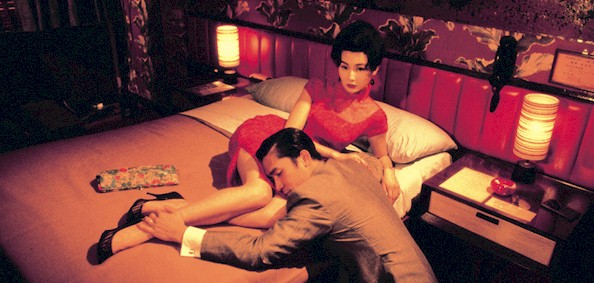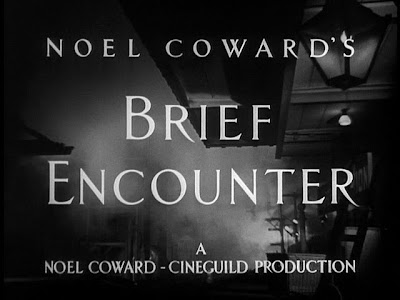Inner Space
I just seen a film at the pictures, well a wee while ago there, and I rarely write about new stuff here because...because...well I'm too...y'know...too *Ahem* lazy, but I think I might have loved this film and I think I might have loved how it used technology and so that's maybe an important thing for me to think about. That said there is absolutely no need for me to subject you to those thoughts, but that has never stopped me before. Ohh and there might be *spoilers* but I don't think so, I've seen it though so I'm probably not the best judge.
 Anyway the film was Gravity (Alfonso Cuarón, 2013). Starring Sandra Bullock as Ryan Stone, and George Clooney in a supporting role as Matt Kowalski. The film is the first one where I can remember people actually pushing you to see it in 3D, not only people but film critics too (if you can stomach it you can watch Mark Kermode make a typically self-indulgent mess of telling us that it is good here) and for what it's worth I have to agree.
Anyway the film was Gravity (Alfonso Cuarón, 2013). Starring Sandra Bullock as Ryan Stone, and George Clooney in a supporting role as Matt Kowalski. The film is the first one where I can remember people actually pushing you to see it in 3D, not only people but film critics too (if you can stomach it you can watch Mark Kermode make a typically self-indulgent mess of telling us that it is good here) and for what it's worth I have to agree.
The use of 3D gives it great perspective, by restricting the depth to within the frame, Cuarón for the most part avoids gimmicky attempts to make the audiences physically react to the images and spill their drink over themselves - I only did it once!
For me, Gravity works in 3D because it doesn't forget what it is first and foremost a film; an intimate, introspective piece. An allegory of pain, guilt and self loathing borne of tragedy. The movie elements come secondary. The thrills are there in the faces and not the explosions. In the wide shots, the vastness of space in 3D appears as epic, but it is played for its restrictiveness, how it isolates. The 3D here seems able, and intended, to give a great sense of scale to extreme wide shots and beautiful intimacy to close ups. The POVs I thought were particularly affecting, with light, reflecting in a curve in front of us from the inside of Ryan's helmet, helping give us a disorientating feeling and isolate us from the surroundings. Some of the most effective shots are close up on Sandra Bullock with just a glimpse of the world seemingly drifting away behind her.
These images are important, wide or close, as they are at the heart of the film. The setting and the main conflicts supplied by the plot, as I said before, are there as allegory. Ryan has lost a child and so her whole world that she now has no way to get back to. The gravity is of things that weigh heavy on the mind and heart, the symbolic gravity of situations and events in your life that propel you along a path unexpectedly, a different direction, but it is monotonous, and slow, and unchangeable, like floating in space. For a good deal of the beginning of the film Ryan is literally spinning out of control and it's at times like this the 3D again works to great effect, as it is heart breaking to see her reach for, and futilely grab at, the ropes and handles as they whizz past us. This links to something I can't reconcile myself with in this film though, one thing I can't get my head around, and that is the tagline for the film: 'Don't Let Go'. The two main things in this film that I can see are the ideas of being adrift in space and being adrift emotionally. This tagline to my mind only works for one, and it's the least of the two. I think, or hope, that 'Don't Let Go' is a studio attachment or else a blatant lie, for this film is surely all about letting go, letting go is the salvation, letting go is how you can continue and rebuild, letting go is not forgetting, but finding the strength not to cling to the past and move on, letting go is how you arrive at a place where you can properly - truthfully, honour and remember the things you no longer have.
Some moments do seem a bit laboured and a touch heavy handed - zero gravity tears spring to mind, but maybe this is because Cuarón is seemingly responsible for every level of production and so is maybe a bit too close (perhaps he should have 'let go' a little). I also found it difficult to feel for Ryan's struggle at one point as I've seen Wall-e (Andrew Stanton, 2008), and I think Cuarón has too, and so like him I know the value of a fire extinguisher in such circumstances and all you need is the will to use it.
This film seems to be a fine example of an idea properly drawn across 90 minutes, there are a couple of stumbles maybe, but it moves at great pace while still being affecting and emotive. It is a beautiful film - not a perfect film, but what is? It has heart and some glorious views. I'll certainly see it again. Finally, for the love of fuck NASA come up with a way to secure pens! What's wrong with the wee beaded chain thing that you get in the post office? Jesus! It's not rocket science (HAHA!…sorry). Ta, J
 Anyway the film was Gravity (Alfonso Cuarón, 2013). Starring Sandra Bullock as Ryan Stone, and George Clooney in a supporting role as Matt Kowalski. The film is the first one where I can remember people actually pushing you to see it in 3D, not only people but film critics too (if you can stomach it you can watch Mark Kermode make a typically self-indulgent mess of telling us that it is good here) and for what it's worth I have to agree.
Anyway the film was Gravity (Alfonso Cuarón, 2013). Starring Sandra Bullock as Ryan Stone, and George Clooney in a supporting role as Matt Kowalski. The film is the first one where I can remember people actually pushing you to see it in 3D, not only people but film critics too (if you can stomach it you can watch Mark Kermode make a typically self-indulgent mess of telling us that it is good here) and for what it's worth I have to agree.The use of 3D gives it great perspective, by restricting the depth to within the frame, Cuarón for the most part avoids gimmicky attempts to make the audiences physically react to the images and spill their drink over themselves - I only did it once!
For me, Gravity works in 3D because it doesn't forget what it is first and foremost a film; an intimate, introspective piece. An allegory of pain, guilt and self loathing borne of tragedy. The movie elements come secondary. The thrills are there in the faces and not the explosions. In the wide shots, the vastness of space in 3D appears as epic, but it is played for its restrictiveness, how it isolates. The 3D here seems able, and intended, to give a great sense of scale to extreme wide shots and beautiful intimacy to close ups. The POVs I thought were particularly affecting, with light, reflecting in a curve in front of us from the inside of Ryan's helmet, helping give us a disorientating feeling and isolate us from the surroundings. Some of the most effective shots are close up on Sandra Bullock with just a glimpse of the world seemingly drifting away behind her.
These images are important, wide or close, as they are at the heart of the film. The setting and the main conflicts supplied by the plot, as I said before, are there as allegory. Ryan has lost a child and so her whole world that she now has no way to get back to. The gravity is of things that weigh heavy on the mind and heart, the symbolic gravity of situations and events in your life that propel you along a path unexpectedly, a different direction, but it is monotonous, and slow, and unchangeable, like floating in space. For a good deal of the beginning of the film Ryan is literally spinning out of control and it's at times like this the 3D again works to great effect, as it is heart breaking to see her reach for, and futilely grab at, the ropes and handles as they whizz past us. This links to something I can't reconcile myself with in this film though, one thing I can't get my head around, and that is the tagline for the film: 'Don't Let Go'. The two main things in this film that I can see are the ideas of being adrift in space and being adrift emotionally. This tagline to my mind only works for one, and it's the least of the two. I think, or hope, that 'Don't Let Go' is a studio attachment or else a blatant lie, for this film is surely all about letting go, letting go is the salvation, letting go is how you can continue and rebuild, letting go is not forgetting, but finding the strength not to cling to the past and move on, letting go is how you arrive at a place where you can properly - truthfully, honour and remember the things you no longer have.
Some moments do seem a bit laboured and a touch heavy handed - zero gravity tears spring to mind, but maybe this is because Cuarón is seemingly responsible for every level of production and so is maybe a bit too close (perhaps he should have 'let go' a little). I also found it difficult to feel for Ryan's struggle at one point as I've seen Wall-e (Andrew Stanton, 2008), and I think Cuarón has too, and so like him I know the value of a fire extinguisher in such circumstances and all you need is the will to use it.
This film seems to be a fine example of an idea properly drawn across 90 minutes, there are a couple of stumbles maybe, but it moves at great pace while still being affecting and emotive. It is a beautiful film - not a perfect film, but what is? It has heart and some glorious views. I'll certainly see it again. Finally, for the love of fuck NASA come up with a way to secure pens! What's wrong with the wee beaded chain thing that you get in the post office? Jesus! It's not rocket science (HAHA!…sorry). Ta, J






Comments
Post a Comment